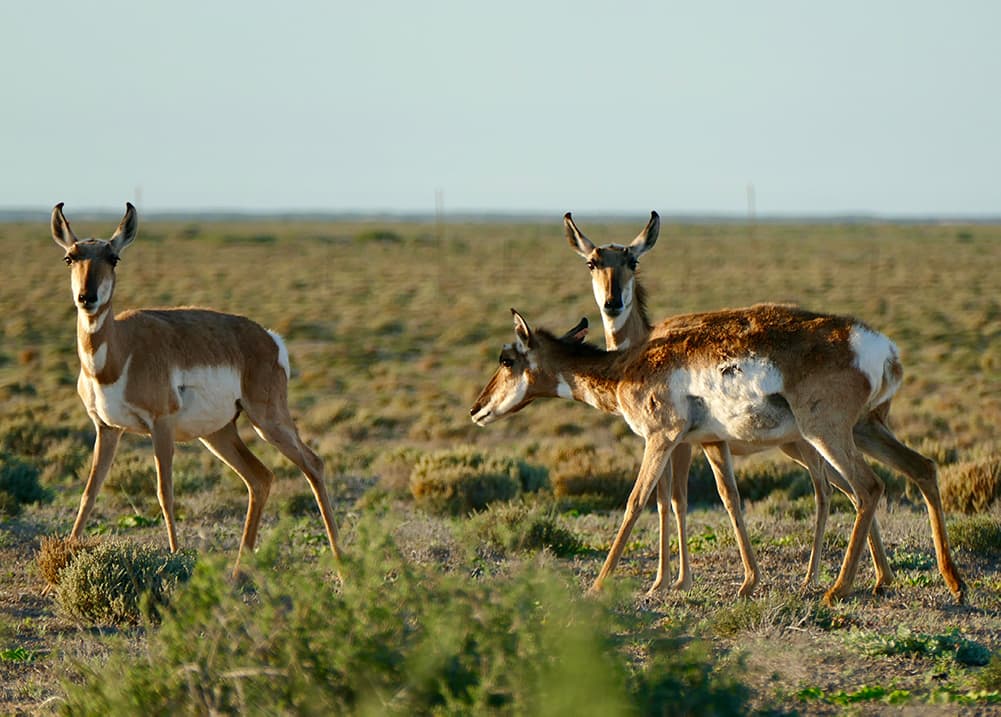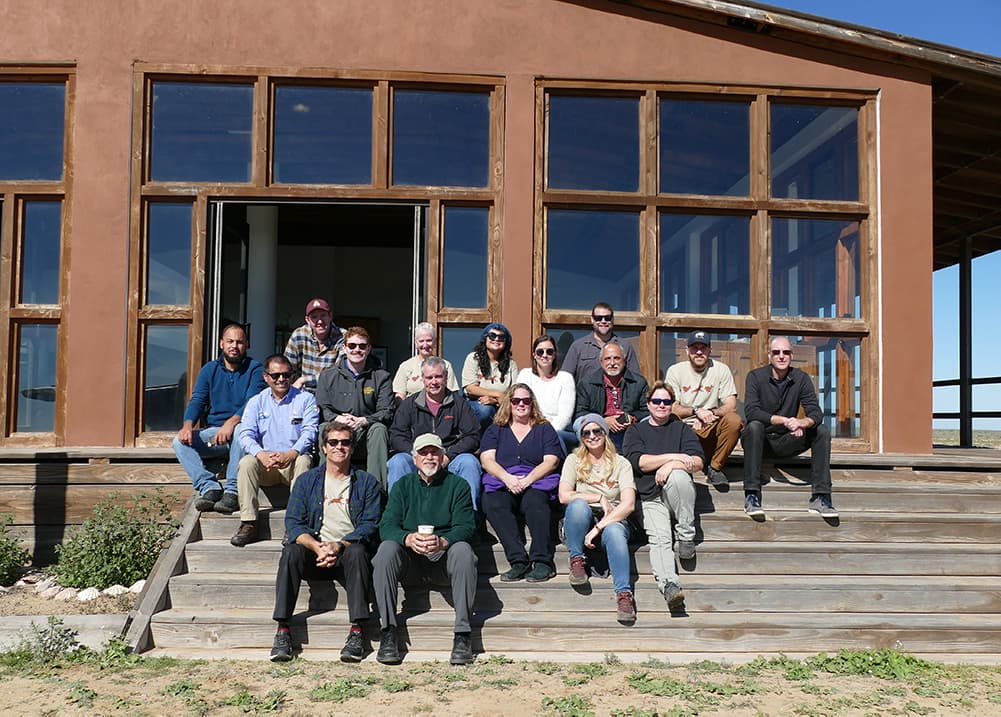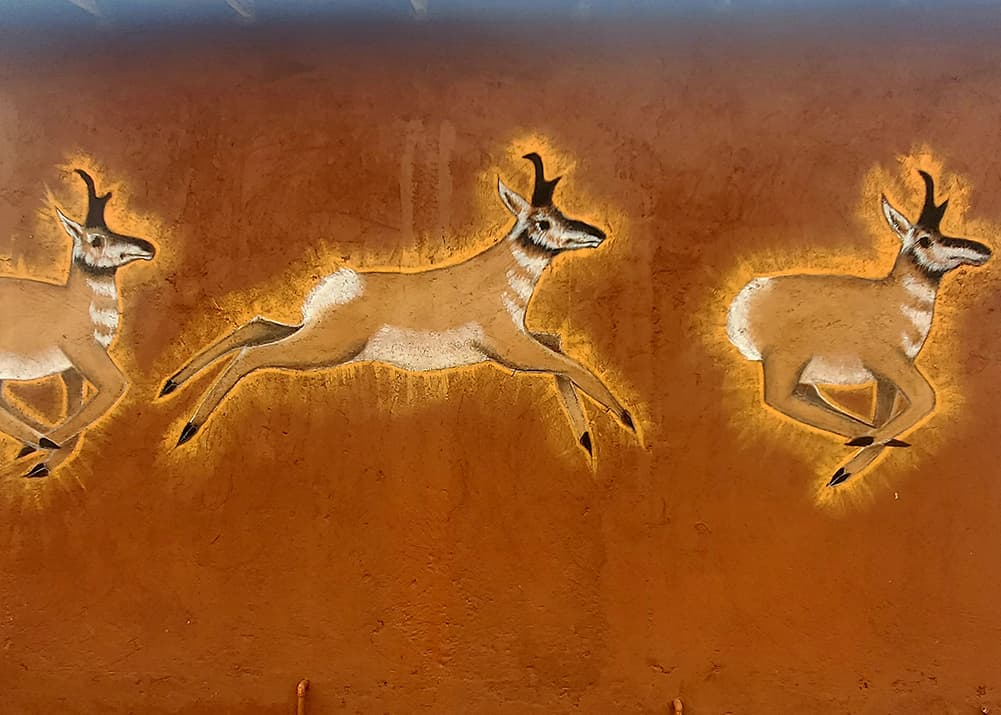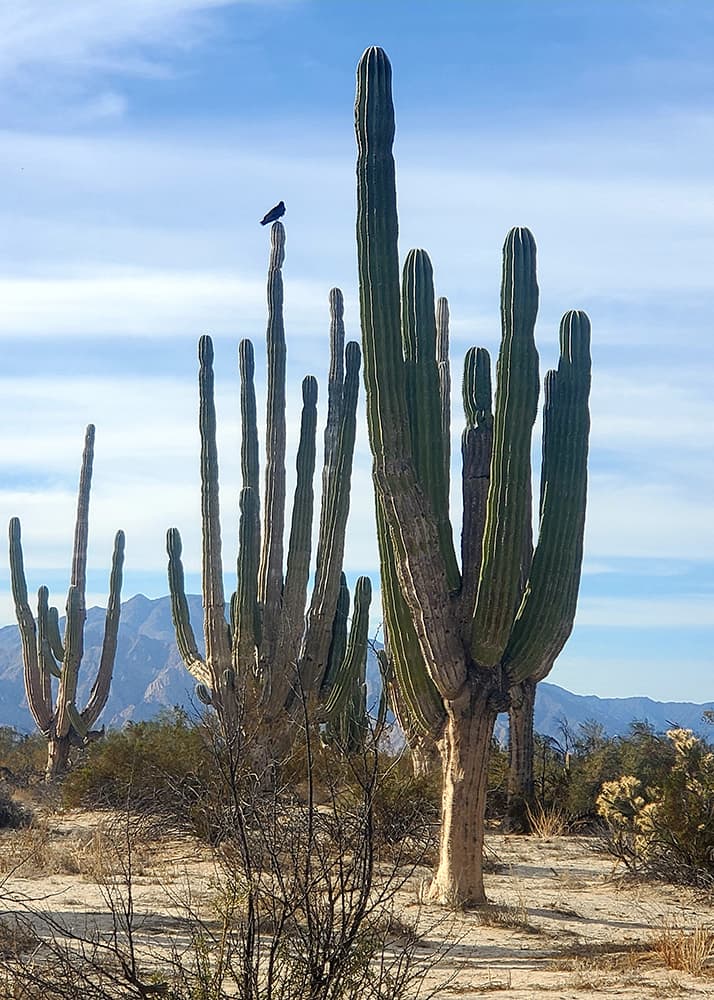Protecting Pronghorn: An Update from South of the Border

New in the Zoo
March 2, 2020
Zoo Update with Tom Jacobson
March 2, 2020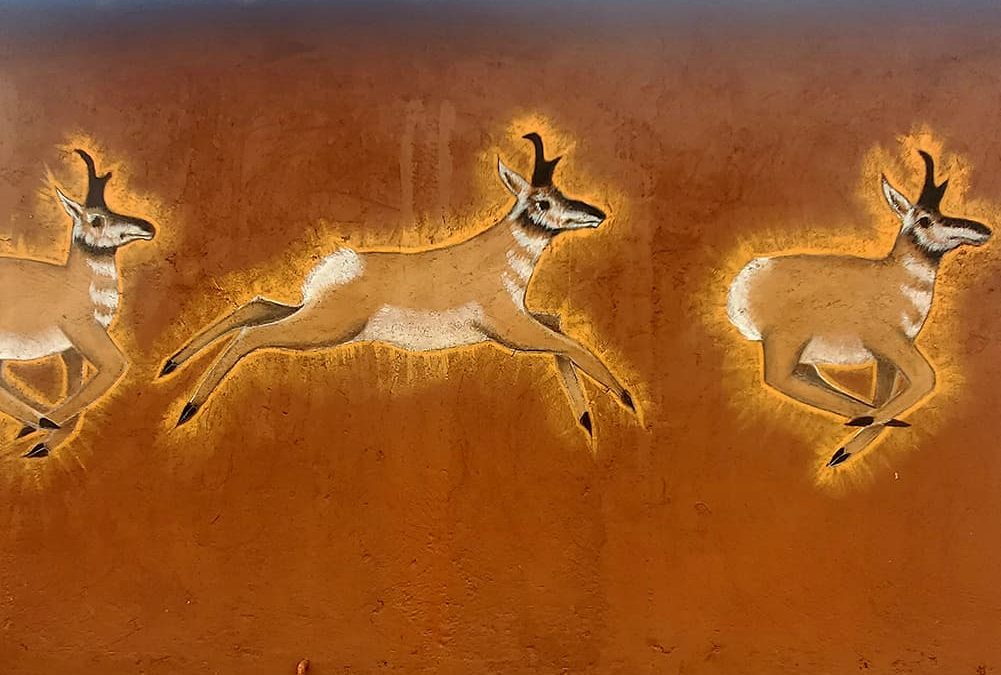
Inspired by cave paintings, these pronghorn images were painted on the back wall of one of the buildings by a staff member. This is also the logo of the project. Photo by Alisa Behar
This year marks the 20th anniversary of the Los Angeles Zoo’s participation in the Berrendo Peninsular Recovery Program (PRBP). In 2000, the L.A. Zoo, the Living Desert Zoo and Gardens, and San Diego Zoo Global formed a consortium whose goal was to further pronghorn conservation efforts led by the Mexican NGO, Espacios Naturales. The Zoo has contributed substantially to this effort, providing key funding, acquiring all the permits for animal transfers from Mexico to the US, and caring for pronghorns during the yearlong quarantine following their transfer. This insurance population is critical to the long-term survival of this subspecies.
Although pronghorns look like antelope, they are the only surviving member of a family of animals that has roamed North America since before the ice age. Their closest relatives are giraffes and okapi. The most threatened of the four subspecies of pronghorn is the critically endangered berrendo peninsular (aka peninsular pronghorn). The impact of increasing human activity resulted in a drastic decline in the wild berrendo population, which dropped as low as 26 individuals in recent decades. Extinction was imminent without immediate intervention.
From January 19–25, L.A. Zoo Director of Animal Programs Beth Schaefer, Curator of Mammals Alisa Behar, and Director of Conservation Jake Owens attended the PRBP stakeholders’ workshop in Guerrero Negro, Baja California, Mexico. During the workshop, representatives from the US, including the zoo consortium and the US Fish and Wildlife Service, and Mexico, including the PRBP and ejido representatives (an ejido is a piece of land farmed communally) worked together to develop the first comprehensive, long-term plan to help restore berrendo populations on both sides of the border.
Among the objectives on the horizon are establishing outreach and engagement programs that will inspire community support for the program in Mexico and developing a species action plan through the International Union for the Conservation of Nature (IUCN) that will potentially lead to the reintroduction of peninsular pronghorn to their historic range in California.
“We left the meeting energized, ready to enhance the actions being taken to save this unique subspecies,” comments Owens. “There is considerable work to be done, and numerous ways we will be able to aid the PRBP. The Zoo and our partners are on a path to not only stop this species from going extinct, but to enable it to flourish throughout its historic range.”



